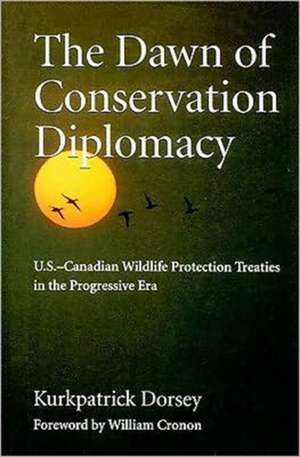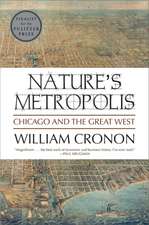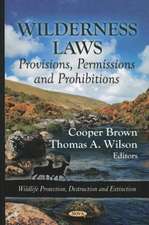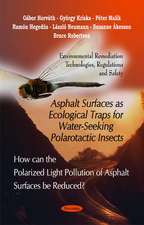The Dawn of Conservation Diplomacy – U.S.–Canadian Wildlife Protection Treaties in the Progressive Era: Weyerhaeuser Environmental Books
Autor Kurkpatrick Dorsey, William Crononen Limba Engleză Paperback – 10 feb 2010
Din seria Weyerhaeuser Environmental Books
-
 Preț: 200.37 lei
Preț: 200.37 lei -
 Preț: 182.30 lei
Preț: 182.30 lei -
 Preț: 200.91 lei
Preț: 200.91 lei -
 Preț: 148.45 lei
Preț: 148.45 lei -
 Preț: 200.66 lei
Preț: 200.66 lei -
 Preț: 200.76 lei
Preț: 200.76 lei -
 Preț: 237.45 lei
Preț: 237.45 lei -
 Preț: 284.21 lei
Preț: 284.21 lei -
 Preț: 233.76 lei
Preț: 233.76 lei -
 Preț: 235.34 lei
Preț: 235.34 lei -
 Preț: 232.45 lei
Preț: 232.45 lei -
 Preț: 228.59 lei
Preț: 228.59 lei -
 Preț: 239.75 lei
Preț: 239.75 lei -
 Preț: 231.46 lei
Preț: 231.46 lei -
 Preț: 228.96 lei
Preț: 228.96 lei -
 Preț: 224.72 lei
Preț: 224.72 lei -
 Preț: 227.62 lei
Preț: 227.62 lei -
 Preț: 233.37 lei
Preț: 233.37 lei - 23%
 Preț: 651.12 lei
Preț: 651.12 lei -
 Preț: 225.71 lei
Preț: 225.71 lei -
 Preț: 227.62 lei
Preț: 227.62 lei -
 Preț: 235.34 lei
Preț: 235.34 lei -
 Preț: 239.16 lei
Preț: 239.16 lei -
 Preț: 232.23 lei
Preț: 232.23 lei -
 Preț: 226.67 lei
Preț: 226.67 lei -
 Preț: 234.73 lei
Preț: 234.73 lei -
 Preț: 229.55 lei
Preț: 229.55 lei -
 Preț: 219.46 lei
Preț: 219.46 lei -
 Preț: 218.62 lei
Preț: 218.62 lei -
 Preț: 439.38 lei
Preț: 439.38 lei
Preț: 232.45 lei
Nou
Puncte Express: 349
Preț estimativ în valută:
44.49€ • 48.35$ • 37.40£
44.49€ • 48.35$ • 37.40£
Carte tipărită la comandă
Livrare economică 21 aprilie-05 mai
Preluare comenzi: 021 569.72.76
Specificații
ISBN-13: 9780295990033
ISBN-10: 0295990031
Pagini: 351
Ilustrații: 24 photographs, 4 maps
Dimensiuni: 181 x 226 x 21 mm
Greutate: 0.52 kg
Editura: MV – University of Washington Press
Seria Weyerhaeuser Environmental Books
ISBN-10: 0295990031
Pagini: 351
Ilustrații: 24 photographs, 4 maps
Dimensiuni: 181 x 226 x 21 mm
Greutate: 0.52 kg
Editura: MV – University of Washington Press
Seria Weyerhaeuser Environmental Books
Recenzii
"Dorsey's superb book connects ecological science, economic interest groups, politics at the local, national, and international level, and the quirks and achievements of colorful advocates. Here is a model for a new and important field of international history." Gaddis Smith, Yale University"Kurkpatrick Dorsey understands how politics deeply affects diplomacy and how public opinion shapes conservation policies. So many issues are similar to those which frustrate Canadian and American negotiators today. The Dawn of Conservation Diplomacy is excellent history which illuminates both past and present." John English, University of Waterloo and former Member of Parliament, Canadian House of Commons"This is a pioneering work that opens fresh, important perspectives on Americans by revealing their views on preserving (and exploiting) their natural environment, their introduction to science into policy decisions, their too-often cynical approach to relations with Canada, and their political genius for 'the art of the deal.' And it is all superbly done." Walter LaFeber, Cornell University"A well-researched and well-written account of an important early chapter in international wildlife preservation of interest not only to environmental historians but anyone interested in the contemporary problems of international cooperation for environmental preservation." Tom Dunlap, author of Saving America's Wildlife
Cuprins
Foreword by William Cronon
Acknowledgments
Introduction: The Intersection of Diplomacy and Conservation
PART ONE: THE INLAND FISHERIES TREATY
A Problem of Scale, 1892-1897
The Jordon Rules, 1898-1909
The One That Got Away, 1909-1914
PART TWO: THE NORTH PACIFIC FUR SEAL CONVENTION
Conflict in the Bering Sea, 1886-1899
Conciliation and Conservation, 1900-1912
PART THREE: THE MIGRATORY BIRD TREATY
Of Mallards and Men, 1883-1913
Coordinating Science, Diplomacy, and Public Relations, 1913-1916
Protecting the National Interest, 1916-1920
Epilogue: Implications of the Progressive Treaties
Notes
Bibliography
Index
Acknowledgments
Introduction: The Intersection of Diplomacy and Conservation
PART ONE: THE INLAND FISHERIES TREATY
A Problem of Scale, 1892-1897
The Jordon Rules, 1898-1909
The One That Got Away, 1909-1914
PART TWO: THE NORTH PACIFIC FUR SEAL CONVENTION
Conflict in the Bering Sea, 1886-1899
Conciliation and Conservation, 1900-1912
PART THREE: THE MIGRATORY BIRD TREATY
Of Mallards and Men, 1883-1913
Coordinating Science, Diplomacy, and Public Relations, 1913-1916
Protecting the National Interest, 1916-1920
Epilogue: Implications of the Progressive Treaties
Notes
Bibliography
Index
Descriere
Examines the first three comprehensive wildlife conservation treaties in history, all between the U.S. and Canada




















